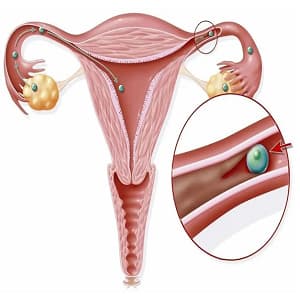Introduction: Tubal infertility is a common issue, and tuberculosis is one of its underlying causes. This article will explore the connection between tuberculosis-induced pelvic inflammation and infertility, as well as discuss the corresponding treatment methods. Furthermore, it will address the question of whether in vitro fertilization (IVF) is suitable if natural conception is not possible even after treatment.

链接:https://pan.baidu.com/s/1JiF3SSnvCUHi0L5o_BgoBQ
提取码:bpzq
–来自百度网盘超级会员V4的分享
Pelvic Inflammation and Infertility Caused by Tuberculosis
In recent years, tuberculosis has been on the rise in certain impoverished areas, affecting people of all ages. It has been identified as one of the causes of tubal infertility. Tuberculosis not only leads to pelvic inflammation and ascites but can also result in infertility. The erosion and damage of the fallopian tube mucosa by tuberculosis bacteria are the primary causes of infertility, as they prevent the passage of sperm and eggs into the uterine cavity. In severe cases, tuberculosis can also obstruct ovulation, impair ovarian function, and even damage the endometrium, leading to reduced menstrual flow and difficulty in embryo implantation. Infertility caused by tuberculosis is relatively challenging to treat.
Treating Tuberculosis-Induced Tubal Infertility
Fortunately, modern anti-tuberculosis drugs are highly effective. Typically, after 1 to 1.5 years of treatment, the activity of tuberculosis ceases, preventing further infection and damage. At this stage, the focus of treatment shifts to addressing secondary complications such as adhesions and scar tissue caused by tuberculosis. Beijing Antai Hospital provides advanced equipment, such as ultrasonic scalpels and 3D laparoscopes, to remove adhesions and repair damaged mucosa through laparotomy. Treatment also involves restoring ovarian function and the endometrium. After undergoing treatment, many patients can achieve natural conception.
Is IVF a Suitable Option?
If natural conception is still not possible after treatment, is IVF a viable option? The answer is negative. If pregnancy remains unattainable even after treatment, it indicates that the ovaries and endometrium have also been damaged, greatly reducing the possibility of natural conception. Even with interventions such as laparotomy to release adhesions and prevent their recurrence, such as the application of anti-adhesive biomembranes and tubal stents, natural conception remains unlikely.
In such cases, the best option for couples desiring children is to pursue surrogacy to have biological offspring. Compared to IVF, surrogacy is a more feasible choice. IVF is not only time-consuming and labor-intensive but also places a significant financial burden. Opting for IVF without achieving the desired pregnancy would result in both human and financial losses, and may even lead to a financial crisis for the family.
In summary, tuberculosis is an important cause of tubal infertility. However, timely and effective treatment, including anti-tuberculosis drugs and laparotomy, allows many patients to regain the ability for natural conception. For couples who remain unable to conceive naturally even after treatment, surrogacy is a worthwhile option that is more practical than IVF, avoiding unnecessary human and financial losses. Most importantly, it is essential to consult and discuss with a medical professional, making informed decisions based on individual circumstances to fulfill their family aspirations.
 安太医院
安太医院







您好!请登录